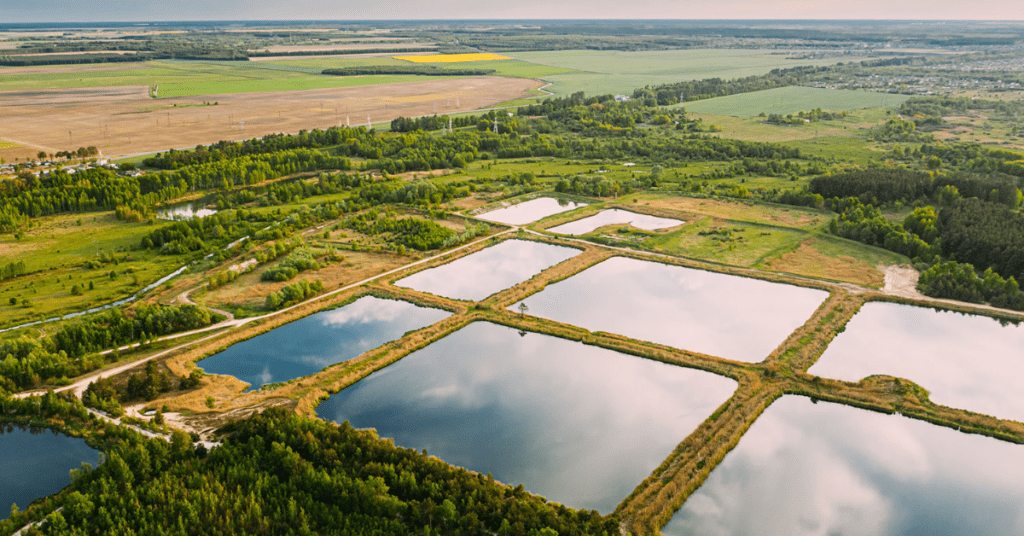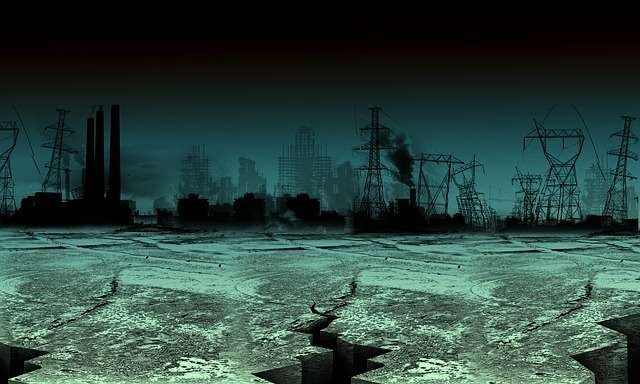The Future Of Electricity Is With Poop!
This article is all about harnessing the Power of Poop as it truly is the future of Renewable Energy, if not a big percentage of all future energy.
I mention how in Plymouth, Indiana, an innovative dairy farm has revolutionized its operations by transforming cow manure into a valuable energy source.
This farm, home to nearly 3,500 cows, invested in a biogas recovery system that converts manure into methane gas, which is then used to generate electricity by gas engine driven electrical generator units.
This system not only meets the farm’s energy needs but also produces enough power to supply 1,000 homes, with the local power company purchasing the excess electricity.
The process involves an anaerobic digester that accelerates the decomposition of manure, urine and food waste, producing methane gas while capturing unpleasant odours.
The methane is then fed into the reasonably large gas engine generators to produce electricity. The remaining by-product, a nutrient-rich fertilizer, is used on the farm’s crops, creating a sustainable cycle.
The digester unit and the generators would not have been cheap but the farm’s investment paid off within five years and they are now planning to build a second facility.
This success story raises the question: why aren’t similar systems implemented at every sewerage treatment facility worldwide?
With 8 billion people contributing waste, the potential for energy generation is immense.
State and local governments, as well as businesses, are beginning to recognize the benefits of wastewater and sewerage treatment by-products.
Various processes recover sewerage sludge and ferment organic matter to produce methane gas. Thermal hydrolysis and anaerobic digestion are key methods in this transformation.
Thermal hydrolysis subjects wet organic waste to high temperatures and pressure, while anaerobic digestion uses bacteria to break down organic matter in the absence of oxygen, requiring temperatures of at least 35 degrees Celsius for optimal efficiency.
In Australia, where electricity costs are soaring, implementing “Poo to Power” plants in the country’s 537 councils could significantly reduce energy bills. These plants produce nearly 99% pure methane, and once operational, they are fully automated and remotely controlled. They require no chemicals or additional water, making them highly reliable.
What is more, these plants could address Australia’s natural gas shortage by storing and compressing the gas for the transmission and distribution network.
Advances in sewerage treatment technology offer a low-cost method of generating electricity, potentially powering cities worldwide and contributing to global emissions reductions.
Unlike solar and wind energy, these plants operate continuously, regardless of weather conditions.
With an infinite supply of feed material, “Poo to Power” plants represent a growing industry. By harnessing the power of waste, we can make significant strides toward a more sustainable future, turning yesterday’s lunch into tomorrow’s energy.
The 5 main takeaways from this article are:
1. Biogas Recovery System: Dairy & livestock farms can turn manure into electricity, producing enough power for all of their farms needs and then create extra money for their farm by providing the grid with surplus energy that can be used to keep the lights on at many homes and businesses.
2. Anaerobic Digestion: The process involves using heat to decompose organic waste, producing methane gas, which is then used to generate electricity.
3. Environmental Benefits: When farms engage this method, they not only generate power but also produces high-quality fertilizer, contributing to sustainable farming practices.
4. Potential in Australia: Implementing similar systems in Australia could help address the energy crisis, reduce electricity bills, and provide a reliable source of natural gas.
5. Sustainability: Converting waste into energy is a cost-effective and efficient renewable energy source, with the potential to significantly reduce global emissions.
Poop To Power = Biogas Recovery Plant.

Poop To Power Plants or more commonly described Biogas Recovery Plants represent a significant advancement in the realm of sustainable energy solutions, transforming sewage waste into a valuable energy source.
This innovative approach to energy production is possible via the conversion of our toilet contributions and other organic waste materials into usable biogas.
Biogas, primarily composed of methane and carbon dioxide, is generated through the anaerobic digestion of sewage waste, a process that not only reduces waste but also produces a renewable form of energy.
The importance of Poop To Power Plants in today’s world needs to be placed on a higher mantle, I think there’s a lot of opportunities to do better in this space.
After all, what’s more a more reliable source of fuel than human poop, it’s going to happen every day for all 7.7 billion humans on this planet.
Then if we start thinking about the resources around us like cows, pigs, sheep, horses, dogs etc, the amount of reliable Power To Power Plant Fuel at our disposal is amazing.
With the global push towards being better with looking after our planet, these plants play a crucial role in achieving energy sustainability.
By harnessing the energy putrid and smelly sewage waste, biogas recovery plants contribute to a circular economy as poop waste is efficiently converted into the extremely valuable resource I call, ‘Electricity’.
This approach helps in proving our electrical grids with more options and helping to ensure a reliable baseload energy supply.
Biogas recovery plants also offer substantial economic advantages. They provide a cost-effective solution for waste management and energy production, helping our towns, cities and industries drive down electricity costs.
Constant production of biogas can lead to energy independence, as communities can generate their own power, reducing their vulnerability to energy price fluctuations and supply disruptions.
The Anaerobic Digestion Process.
Anaerobic digestion is the cornerstone technology employed in biogas recovery plants, transforming sewage waste into valuable energy sources.
This intricate process begins with the collection and transportation of sewage waste to the recovery facility.
Here, the waste undergoes a series of biological reactions in an oxygen-free environment, facilitating the breakdown of organic matter and the generation of biogas.
The anaerobic digestion process is comprised of four key stages: hydrolysis, acidogenesis, acetogenesis, and methanogenesis.
During the initial stage, hydrolysis, complex organic compounds such as carbohydrates, fats, and proteins are broken down into simpler molecules like sugars, fatty acids, and amino acids.
This is followed by acidogenesis, where the simple molecules produced in hydrolysis are further degraded by acidogenic bacteria into volatile fatty acids, alcohols, hydrogen, and carbon dioxide.
In the third stage, acetogenesis, the volatile fatty acids and alcohols are converted into acetic acid, hydrogen, and carbon dioxide by acetogenic bacteria.
The final stage, methanogenesis, is where the magic happens. Methanogenic archaea, a specialized group of microorganisms, convert the acetic acid, hydrogen, and carbon dioxide into methane and additional carbon dioxide.
The resulting biogas is a mixture primarily composed of methane (CH4) and carbon dioxide (CO2), along with trace amounts of other gases.
Biogas, with its high methane content, is an excellent renewable energy source. It can be utilized in various applications, such as generating electricity and heat, or upgraded to biomethane for use as a vehicle fuel.
This versatile energy form not only helps reduce dependence on fossil fuels but also contributes to the reduction of greenhouse gas emissions.
The anaerobic digestion process is a sustainable and efficient method for converting sewage waste into a valuable energy resource, thus playing a pivotal role in the transition towards a more sustainable and circular economy.
From Biogas to Electricity: The Conversion Process.
The transformation of biogas into electricity is a multifaceted process that begins with the anaerobic digestion of sewage waste.
This digestion produces biogas, primarily composed of methane and carbon dioxide. To utilize biogas as an energy source, it must first undergo a purification process to remove contaminants such as hydrogen sulfide, moisture, and siloxanes.
This purification is essential to protect the gas engines and ensure efficient combustion.
Once purified, the biogas is fed into gas-fueled internal combustion engine-driven electricity generators.
Internal combustion engine driven generators, often adapted from traditional diesel or natural gas engines, are the most commonly used in biogas power plants due to their robustness and efficiency.
The chemical energy stored in the biogas is converted into mechanical energy through the combustion process within the engine’s cylinders.
This mechanical energy then drives a generator, producing electrical energy.
Technological advancements have significantly improved the reliability and output of biogas power systems.
Wartsila’s 20MW engine driven power generators represent a significant advancement in the realm of power generation technology.
These units are engineered to deliver high efficiency and reliability, making them a formidable choice for both primary and backup power applications.
One of the standout features of Wartsila’s 20MW generators is their robust design, which ensures long-term durability and minimal maintenance requirements.
This reliability is further augmented by Wartsila’s advanced control systems that optimize performance and enable seamless integration with existing power grids.
Technological innovation is a hallmark of Wartsila and all of their offerings.
The engines are capable of operating on various eco-friendly fuel types, including biogas, natural gas, synthetic gas and bio-diesel making them truly versatile machine in different operational environments where minimal emissions is the goal.
This capability is particularly advantageous in regions where access to traditional fuel sources may be limited or where there is a strong push towards sustainable energy solutions.
In terms of specifications, the Wartsila 20MW gas-fueled generators boast impressive electrical efficiency rates.
Their efficiency when fueled by biogas can depend the composition and quality of the biogas.
Typically, the electrical efficiency of a reciprocating gas engine generator set fueled by biogas can range from around 35% to 42% but Wartsilla are up into the above 45% efficiency band (generally speaking).
The Biogas composition is key, the methane content, presence of impurities (e.g., hydrogen sulfide, siloxanes) and heating value of the biogas can affect the engine’s performance and efficiency.
The high efficiency of the Warsilla Units translates to lower operating costs and reduced environmental impact, making them a cost-effective alternative to conventional power generation methods.
These electricty generators are also designed to be highly modular, allowing for easy scalability to meet increasing power demands without the need for extensive infrastructure modifications.
The journey from sewage waste to reliable electricity highlights the intricate yet highly efficient processes involved in biogas conversion.
Through ongoing technological advancements, the potential of biogas as a renewable energy source continues to expand, offering a promising solution to the global energy challenge.
Environmental and Economic Impact.
The transition from sewage waste to power generation via biogas recovery plants offers notable environmental and economic benefits.
As we look toward the future, the potential of biogas recovery plants in shaping a sustainable energy landscape is promising.
With advancements in technology and increasing emphasis on reducing carbon footprints, these plants could play a pivotal role in the global transition to renewable energy.
By transforming what we had for lunch yesterday into electricity, biogas recovery plants embody the principles of a circular economy, where sustainability and economic viability go hand in hand.
My Poop To Power Learning Journey.

About 8 years ago, I read about a fascinating American dairy farm in Plymouth, Indiana, that had completely transformed their business by producing their own power from cow manure.
They saw the big picture and realised the long-term benefits of investing in a biogas recovery system that would turn a somewhat smelly and messy daily reminder that they have nearly 3,500 cows into something that smelled a little more like money.
The funny thing was, they didn’t just end up making enough electricity to take care of their own needs; they ended up making enough to power 1,000 homes, and their local power company paid them well for their feed into the grid.
Their massive anaerobic digester uses heat to accelerate the decomposition of the 264,000 litres of poop, urine, and food waste. The process produces methane gas and captures all the smell.
The methane is fed into the gas engine generators, which provide power. The benefits didn’t stop there; the foul-smelling goo that remained in the digesters was excellent fertiliser, which they used on their crops.
They recovered all of their costs in 5 years, and the last I heard about them, they were planning to build a second poop-to-power facility on their farm.
I remember thinking at the time, “Why don’t we have that in place at every single sewerage treatment facility on the planet?” After all, we’ve got over 7 billion contributors, and that number is expected to rise by 1.1% per year.
Sewerage Treatment Plants can create clean & affordable electricity.

Finally, it appears that state and local governments, as well as some businesses, are reaping the benefits of wastewater and sewerage treatment by-products. As a result, there are now a plethora of sewage recovery solutions in use around the world, and poo power is unquestionably to the rescue.
Essentially, all of their variously named processes do the same thing: they recover sewerage sludge and ferment the organic matter to produce methane gas. The methane gas is produced through thermal hydrolysis and anaerobic digestion.
Sewerage sludge and other types of wet organic waste are subjected to high temperatures and pressure during thermal hydrolysis.
Anaerobic digestion is the process by which bacteria break down organic matter and wastewater in the absence of oxygen, and it must be carried out at a temperature of at least 35 degrees Celsius to be most effective.
The Advantages Of Poop-to-Power Plants?

When you think about it, converting sewerage and other sludge into methane gas to generate electricity should be a mandatory requirement for every sewerage treatment facility, especially in a country like Australia that is experiencing a severe energy crisis.
The cost of electricity in NSW is now so high that even households with solar panels are struggling to pay their bills due to a massive drop in feed in tariffs imposed by electricity retailers.
Imagine if every one of Australia’s 537 councils had Poop to Power plants in operation, constantly feeding the grid. Perhaps this would be enough to flood the grid with electricity 24 hours a day, seven days a week in Australia, forcing a significant reduction in electricity bills.
The methane produced by this process is just under 99% pure, and once these plants are operational at sewerage treatment facilities, everything is fully automated and can be controlled remotely. There are no chemicals involved, no additional water is required, and they are extremely dependable.
Another way of selling the idea of Poop to Power Plants is that they produce natural gas and in NSW Australia, which is now the most expensive place on the planet to pay for natural gas.
So imagine if Poop to Power plants at these 537 councils stored the gas, compressed it and then fed the gas transmission and distribution network and ended the gas shortage problems in Australia?
Creating cheap clean energy for the whole world.

Advances in sewerage treatment technology allow us to generate electricity from the processes of converting sewerage into usable energy. This is a low-cost method of generating electricity that could eventually power cities worldwide.
It also contributes to global emissions reductions by converting waste into an energy source. Furthermore, because it works at night, when it is raining, and when there is no wind, this type of sewage wastewater treatment process is more efficient than other alternatives.
There is an infinite supply of feed material for poo-to-power plants, and if the world’s population continues to rise year after year, it is actually a growing industry.
Poop to Power plants have the potential to be the most cost-effective and efficient renewable energy sources currently available.
15 benefits of this technology that come to mind:
1.
Renewable energy production:
Biogas is a renewable energy source, reducing reliance on fossil fuels and
contributing to a sustainable energy future.
2.
Waste management: These plants
can process various organic waste streams, such as agricultural residues, food
waste, and municipal solid waste, reducing the amount of waste sent to
landfills.
3.
Greenhouse gas reduction:
Anaerobic digestion captures methane, a potent greenhouse gas, and converts it
into a usable energy source, reducing overall emissions.
4.
Energy self-sufficiency: Biogas
plants can generate electricity on-site, providing energy self-sufficiency for
facilities or communities.
5.
Nutrient recovery: The digestate
(solid residue) from the anaerobic digestion process can be used as a
nutrient-rich fertilizer for agricultural applications.
6.
Odour control: The anaerobic
digestion process helps in reducing odors associated with organic waste
decomposition.
7.
Diversification of energy
sources: Biogas plants contribute to the diversification of energy sources,
enhancing energy security and independence.
8.
Rural development: These plants
can create job opportunities and economic growth in rural areas, particularly
where agricultural waste is abundant.
9.
Decentralized energy production:
Biogas plants can be located near waste sources, enabling decentralized energy
production and reducing transmission losses.
10. Flexible
feedstock: Various organic waste streams, including agricultural residues, food
waste, and municipal solid waste, can be used as feedstock for these plants.
11. Efficient
waste treatment: Anaerobic digestion effectively treats organic waste, reducing
the environmental impact of improper waste disposal.
12. Low
maintenance: Biogas plants generally require minimal maintenance compared to
other renewable energy technologies.
13. Reduced
dependence on fossil fuels: By generating electricity from biogas, these plants
reduce the need for fossil fuel-based power generation.
14. Closed-loop
systems: Biogas plants can be designed as closed-loop systems, minimizing
environmental impact and maximizing resource efficiency.
15. Versatile
applications: Biogas can be used not only for electricity generation but also
for heating, cooking, and transportation fuel applications.
These benefits cover various aspects, including environmental sustainability, energy security, economic development, and waste management, making biogas recovery plants an attractive option for promoting renewable energy and sustainable practices.









[…] […]
[…] Cheap and Clean Power from Poop – Heal This Rock. Poo to Power Plants solution 2023. Energy Avoidance Syndrome Virus – Heal This Rock. Wall around australia. Underwater Shark Watching Tours – Heal This Rock. HTR Class sub 1. Suspected case of Sawtov Brain Flu – Heal This Rock. Sawtov brain flu patient. Cut and recycle green tape in Australia – Heal This Rock. Cut up and recycle green tape today. Stop complaining about city lIfe and leave. – Heal This Rock. Cluttered living in sydney. Humans need to be inclusive in all areas – Heal This Rock. Document disclaimer. Explaining the healthisrock website – Earth needs your help. […]
[…] So the director of Net Zero Agency Division 6 began working with Gogeta6 scientists to develop new technology capable of producing methane gas such as, Biogas (methane) from Sewage Treatment. […]
[…] CHEAP CLEAN POWER FROM SEWAGE SLUDGE […]
[…] CHEAP AND CLEAN POWER FROM POOP […]
[…] able to return to the workforce. Over a 3 year period he tried working at a Power Station, a Sewage Treatment Plant and even got a recurring role on a TV […]
[…] Over the last ten years, the VPV team has been closely monitoring technological advancements in the production of bio-gas from thermal hydrolysis and anaerobic digestion (poop to power plants). […]
[…] They may not be aware of technology that uses poop to make power. […]
[…] CHEAP AND CLEAN ELECTRICITY FROM YOUR POOP […]
[…] Creating Electricity from your Sewage […]
[…] instance, the town could explore the possibility of implementing a Biogas Recovery Plant alongside any new sewage works that will almost certainly happen as the town grows. This plant […]